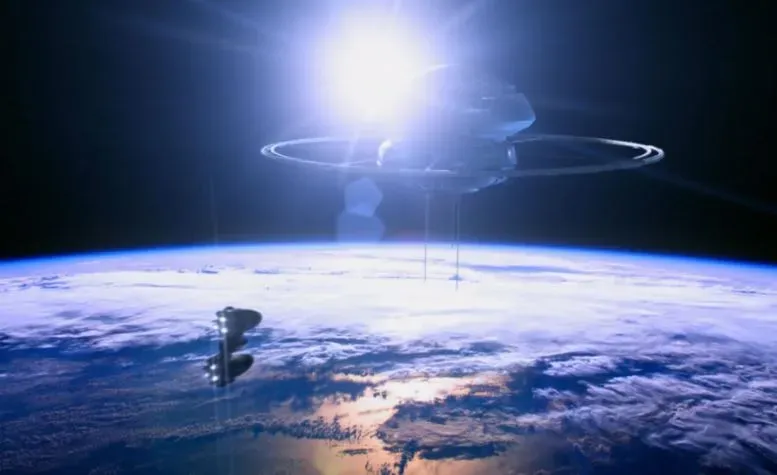NASA has awarded a grant to develop a radical propulsion concept that could theoretically send a heavy spacecraft to the edge of the Solar System in less than five years. The concept, called ‘pellet-beam’ propulsion, is based on shooting a stream of tiny particles at a spacecraft to accelerate it to high speeds, reports sciencealert.com.
The idea was inspired by the Breakthrough Starshot initiative, which aims to send a light-sail probe to the nearest star system, Proxima Centauri, in 20 years. However, the pellet-beam concept is designed to move much larger payloads, such as one-ton spacecraft that could carry scientific instruments or even humans.
The concept involves two spacecraft: one that orbits Earth and one that travels to interstellar space. The Earth-orbiting spacecraft would use lasers to heat up and accelerate microscopic pellets made of solid material.
The pellets would reach speeds of up to 120 km/s (75 miles/s) and hit a sail or a magnet on the interstellar spacecraft, giving it a boost of momentum.
According to Artur Davoyan, an aerospace engineer at the University of California, Los Angeles, and the lead researcher behind the proposal, the pellet-beam propulsion could enable fast exploration of the Solar System and beyond.
He estimates that with this system, outer planets could be reached in less than a year, 100 astronomical units (AU) – the distance from Earth to the Sun – in about three years, and the solar gravity lens at 500 AU – a region where light from distant objects is magnified by the Sun’s gravity – in about 15 years.
For comparison, it took the Voyager 1 probe 35 years to cross into interstellar space in 2012, at about 122 AU from the Sun. The pellet-beam concept could potentially reach that distance in less than five years.
The concept is still in its early stages of development and faces many challenges, such as ensuring the accuracy and stability of the pellet beam, minimizing the mass and power requirements of the system, and protecting the spacecraft from collisions with interstellar dust.
Davoyan and his team plan to use computer simulations and laboratory experiments to test and refine their idea.
If successful, the pellet-beam propulsion could open up new possibilities for interstellar exploration and discovery. As Davoyan said, “We want to start creating a map of this unknown region between our Sun and the interstellar medium.”
